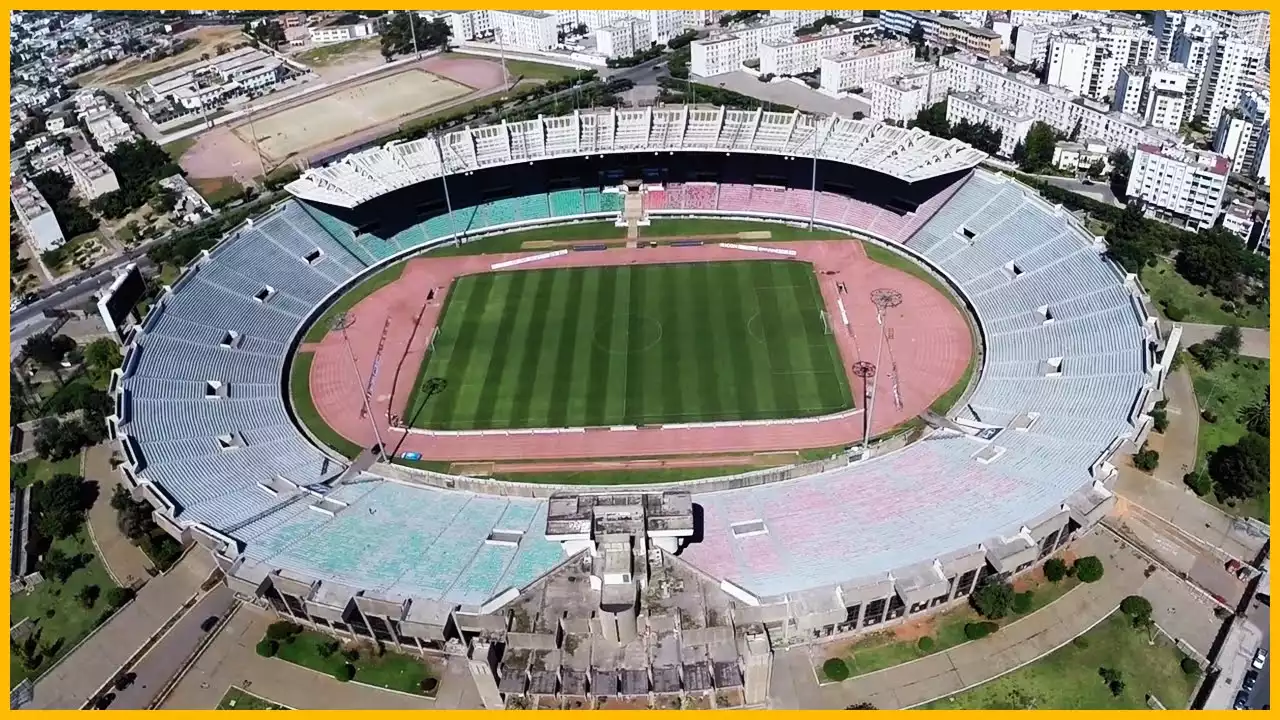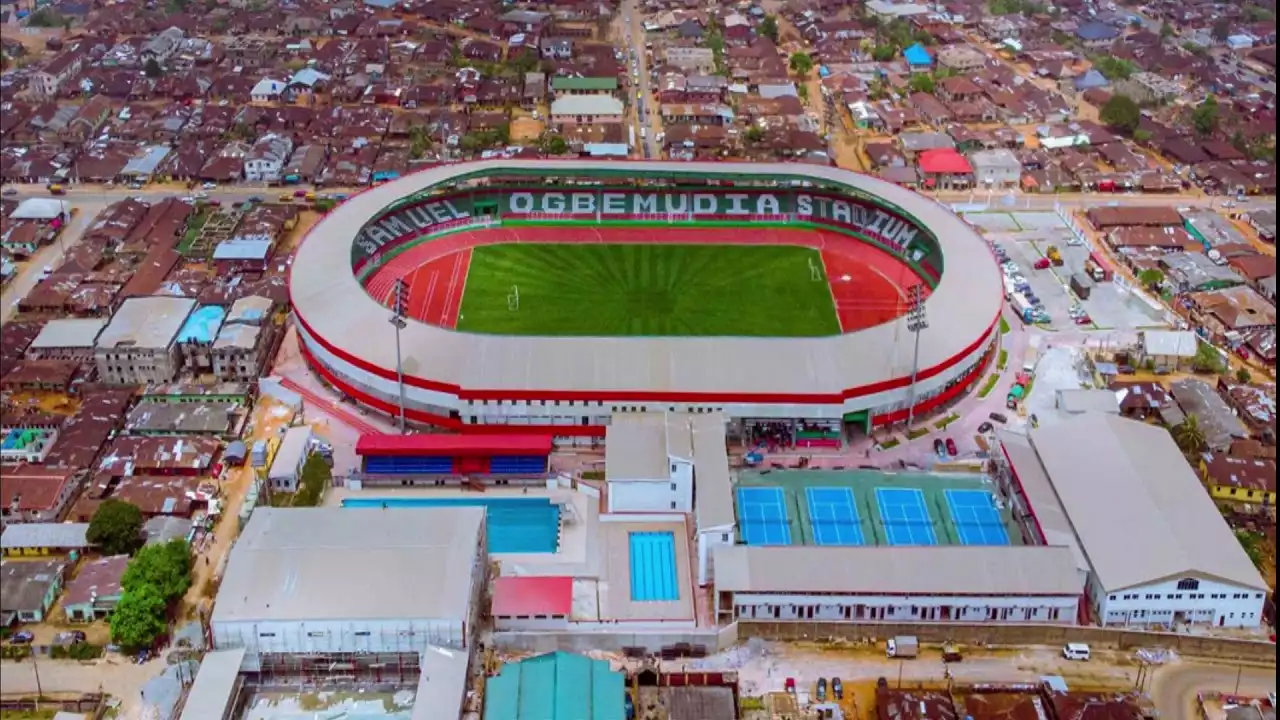Understanding the Connection between Local Culture and Stadium Design
AFCON stadiums are more than just venues for hosting football matches. They serve as cultural landmarks that showcase the identity and heritage of the host country. The connection between local culture and stadium design goes beyond surface-level aesthetics. It is about creating a space that resonates with the people and reflects their values.
Incorporating local culture into stadium design is a way of celebrating the host country's unique traditions and history. From the choice of architectural elements to the materials used in construction, every aspect is carefully considered to create a cohesive and meaningful design. By immersing visitors in the local culture, these stadiums provide an opportunity to promote and preserve traditional arts and heritage.
The design process involves extensive research into the local culture, including its art, architecture, and symbolism. Architects and designers collaborate with local communities and artists to ensure that the stadiums truly represent the essence of the host country. This collaborative approach not only enhances the authenticity of the design but also fosters a sense of ownership and pride among the locals.
Examples of AFCON Stadiums Incorporating Local Culture
AFCON stadiums are known for their unique and visually striking designs that incorporate local cultural elements. Let's take a closer look at some examples of AFCON stadiums that successfully reflect the local culture.
1. The National Stadium in Lagos, Nigeria: This iconic stadium features a distinctive design inspired by traditional Nigerian architecture. The roof structure resembles the shape of a traditional African hut, while the façade is adorned with intricate patterns and symbols from Nigerian art. The use of vibrant colors and locally sourced materials further adds to the cultural significance of the stadium.
2. The Stade de Marrakech in Morocco: Designed to resemble the traditional Moroccan courtyard, this stadium seamlessly blends modern architecture with local heritage. The intricate geometric patterns on the exterior walls pay homage to the rich Islamic art and architecture of the region. Inside the stadium, visitors are greeted with a vibrant color palette inspired by the colorful markets of Marrakech.
3. The Cairo International Stadium in Egypt: This stadium is a true reflection of Egyptian culture and history. The design draws inspiration from ancient Egyptian architecture, with the grand entrance resembling the iconic temples of Luxor and Karnak. The use of hieroglyphics and pharaoh-inspired motifs throughout the stadium creates a sense of awe and wonder, immersing visitors in the rich Egyptian heritage.
Cultural Elements in AFCON Stadium Architecture
The architecture of AFCON stadiums plays a crucial role in reflecting the local culture. From the shape and form to the choice of materials, every aspect is carefully considered to create a design that resonates with the host country's heritage.
One common architectural element found in many AFCON stadiums is the incorporation of traditional motifs and symbols. These motifs can be seen in the patterns on the walls, the shape of the roof, or even in the layout of the stadium. For example, the circular shape of the Stade de Marrakech in Morocco is reminiscent of traditional Moroccan courtyards, while the National Stadium in Lagos, Nigeria, features intricate patterns inspired by Nigerian art.
Another important aspect of AFCON stadium architecture is the use of local materials. Architects often prioritize the use of materials that are native to the host country, such as locally sourced stone, wood, or clay. Not only does this create a stronger connection to the local culture, but it also promotes sustainable construction practices and reduces the carbon footprint of the stadium.
In addition to incorporating cultural elements in the physical structure of the stadium, architects also consider the surrounding landscape. Many AFCON stadiums are designed to blend seamlessly with the natural environment, incorporating elements such as gardens, water features, or open-air spaces. This creates a harmonious relationship between the stadium and its surroundings, further enhancing the cultural experience for visitors.
Importance of Local Materials in AFCON Stadium Construction
The choice of materials used in the construction of AFCON stadiums is of utmost importance. By using local materials, architects not only pay homage to the host country's heritage but also contribute to the sustainability and longevity of the stadium.
Local materials are often more readily available and cost-effective, making them a practical choice for stadium construction. They also help support local industries and create employment opportunities for the local community. By utilizing materials sourced from the region, AFCON stadiums become a symbol of local craftsmanship and expertise.
In addition to the economic benefits, the use of local materials also contributes to the environmental sustainability of the stadium. Locally sourced materials require less transportation, reducing the carbon footprint associated with construction. Furthermore, these materials are often more durable and resilient, ensuring the longevity of the stadium and minimizing the need for future repairs or renovations.
By prioritizing the use of local materials, AFCON stadiums become a testament to the host country's commitment to sustainable development and preservation of natural resources. They serve as a reminder that cultural celebration and environmental responsibility can go hand in hand.
Impact of Local Culture on AFCON Stadium Atmosphere
The incorporation of local culture in AFCON stadium design goes beyond aesthetics. It has a profound impact on the atmosphere and overall experience for both players and spectators.
For players, competing in a stadium that reflects the local culture can be incredibly inspiring. The vibrant colors, patterns, and symbols create an immersive environment that enhances their performance and ignites a sense of pride. It creates a powerful connection between the players and the host country, motivating them to give their best on the field.
Spectators also benefit from the cultural integration in AFCON stadiums. Attending a match in a stadium that embodies the local culture provides a unique and memorable experience. It allows fans to feel a sense of belonging and connection to the host country, fostering a strong bond between the spectators and the game. The cultural elements in the stadium design create an electric atmosphere, amplifying the excitement and passion of the crowd.
Furthermore, the cultural integration in AFCON stadiums extends beyond the match itself. Many stadiums host cultural events and activities that showcase the host country's traditions, music, and dance. This not only adds to the overall experience for visitors but also helps promote local artists and performers. It creates a platform for cultural exchange and appreciation, fostering a deeper understanding and respect for the host country's culture.
Incorporating Local Traditions in AFCON Stadium Events and Activities
AFCON stadiums are not just venues for football matches. They serve as cultural hubs that celebrate the host country's traditions and heritage. From pre-match ceremonies to halftime performances, there are numerous opportunities to incorporate local traditions in stadium events and activities.
One common practice is the inclusion of traditional music and dance performances before or during matches. This allows visitors to experience the rhythmic beats and vibrant movements that are deeply rooted in the host country's culture. It adds an extra layer of excitement and entertainment to the match, creating a truly immersive experience.
Another way to incorporate local traditions is through food and beverage offerings. Many AFCON stadiums feature food stalls and vendors that serve traditional cuisine and beverages. This allows visitors to indulge in the flavors and tastes of the host country, further immersing themselves in the local culture. It also provides an opportunity to support local businesses and culinary traditions.
Additionally, AFCON stadiums often showcase local arts and crafts through exhibitions and displays. This not only promotes local artists and artisans but also educates visitors about the traditional art forms and craftsmanship of the host country. It creates a platform for cultural exchange and appreciation, enriching the overall experience for visitors.
Challenges and Considerations in Balancing Local Culture and Modernity in AFCON Stadium Design
While incorporating local culture in AFCON stadium design is essential, it is not without its challenges. Balancing tradition and modernity requires careful consideration and collaboration between architects, designers, and local communities.
One of the main challenges is finding the right balance between preserving tradition and embracing modernity. AFCON stadiums need to cater to the needs of modern sports events while staying true to the host country's cultural identity. This requires a delicate balance of incorporating traditional elements in a way that complements modern architectural and technological advancements.
Another challenge is ensuring that the cultural elements incorporated in the stadium design are authentic and respectful. It is important to involve local communities and artists in the design process to ensure that the cultural representation is accurate and meaningful. This collaborative approach helps avoid cultural appropriation and fosters a sense of ownership and pride among the locals.
Furthermore, the financial considerations of stadium construction can also pose challenges. Incorporating local cultural elements may require additional resources and expertise, which can impact the overall budget. It is crucial to find a balance between the financial feasibility and the cultural significance of the design.
Despite these challenges, the incorporation of local culture in AFCON stadiums is a worthwhile endeavor. It creates a unique and memorable experience for visitors, and contributes to the preservation and promotion of traditional arts and heritage.
The Future of AFCON Stadiums and Cultural Integration
As the Africa Cup of Nations continues to grow in popularity, the future of AFCON stadiums holds great potential for further cultural integration. With each host country bringing its own unique traditions and heritage, there are endless opportunities to create stadiums that truly embody the spirit of the tournament.
The future of AFCON stadium design lies in embracing innovation and technology while staying rooted in the local culture. Advancements in sustainable construction practices and materials can further enhance the environmental impact of stadium design. Additionally, integrating digital technologies can create immersive experiences for visitors, allowing them to connect with the host country's culture in new and exciting ways.
Moreover, AFCON stadiums can serve as catalysts for social and economic development. By incorporating local materials and engaging local communities, stadium construction can create employment opportunities and support local industries. The stadiums can become symbols of national pride and serve as platforms for cultural exchange and tourism.
Celebrating Diversity through AFCON Stadium Design
The incorporation of local culture in AFCON stadium design is a testament to the rich heritage and traditions of the host country. It goes beyond mere aesthetics, creating a sense of pride, connection, and celebration for both players and spectators. The careful integration of cultural elements in the architecture, materials, and events of AFCON stadiums ensures an immersive and unforgettable experience for visitors.
As AFCON continues to captivate the world with its exciting matches and vibrant atmosphere, the future of stadium design holds great promise. By embracing innovation, sustainability, and collaboration, AFCON stadiums can become iconic symbols of cultural integration and celebrate the diverse heritage of the African continent.










